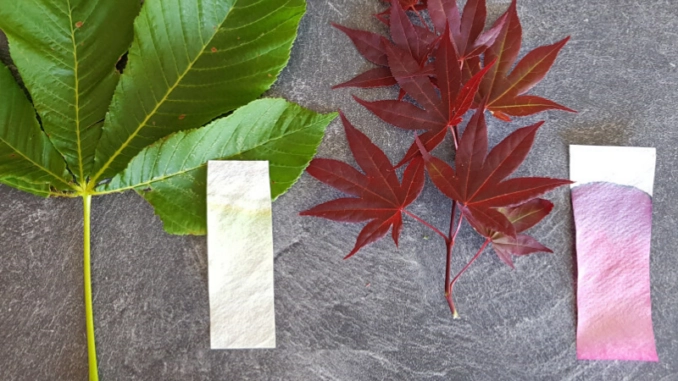
Have you ever wondered where the colors of the leaves come from? And why do they change colour with the seasons? In this experiment, you will extract pigments from the leaves and use a chemical technique called chromatography. Using capillary forces, you will discover the colourful world hidden in tree leaves.
You will need:
- Tree leaves of different species (maple, Virginia creeper, chestnut, oak...)
- Household alcohol
- Jam jars with lids
- Hot water
- A heat-resistant dish
- Coffee filters
- A pair of scissors
- Cheesecloth
- 3 pencils
- Adhesive tape
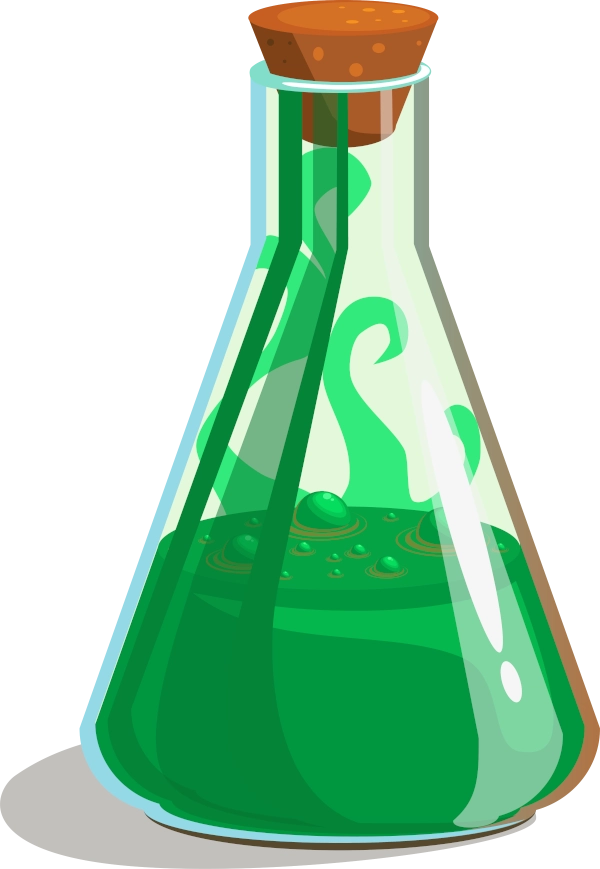
From 8 years old

Difficulty : medium

This experience requires the help of an adult

Let's experiment

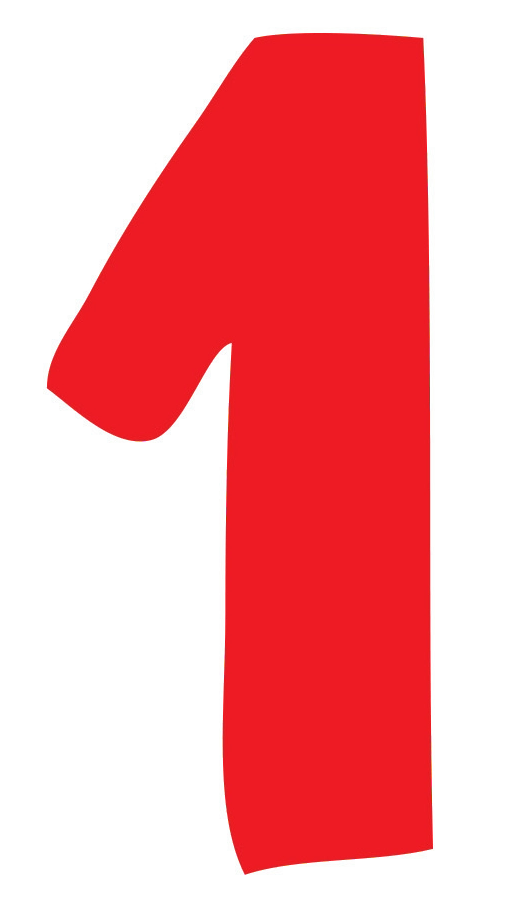
With your scissors, cut 2 to 3 tree leaves (of the same species) into small pieces. We have chosen Virginia creeper, red maple, and chestnut leaves.
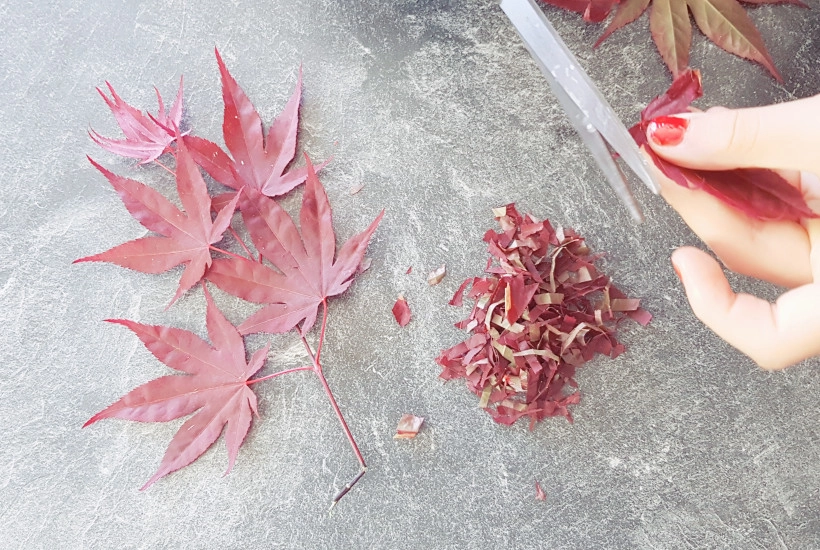

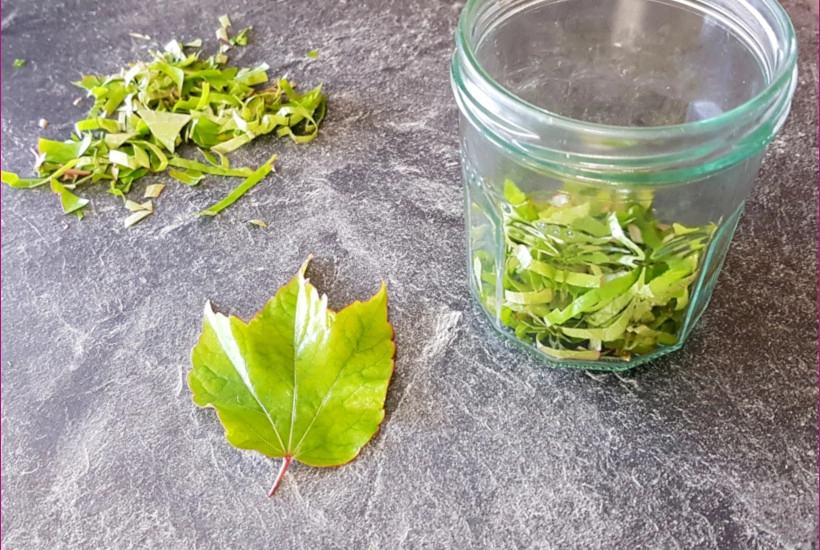
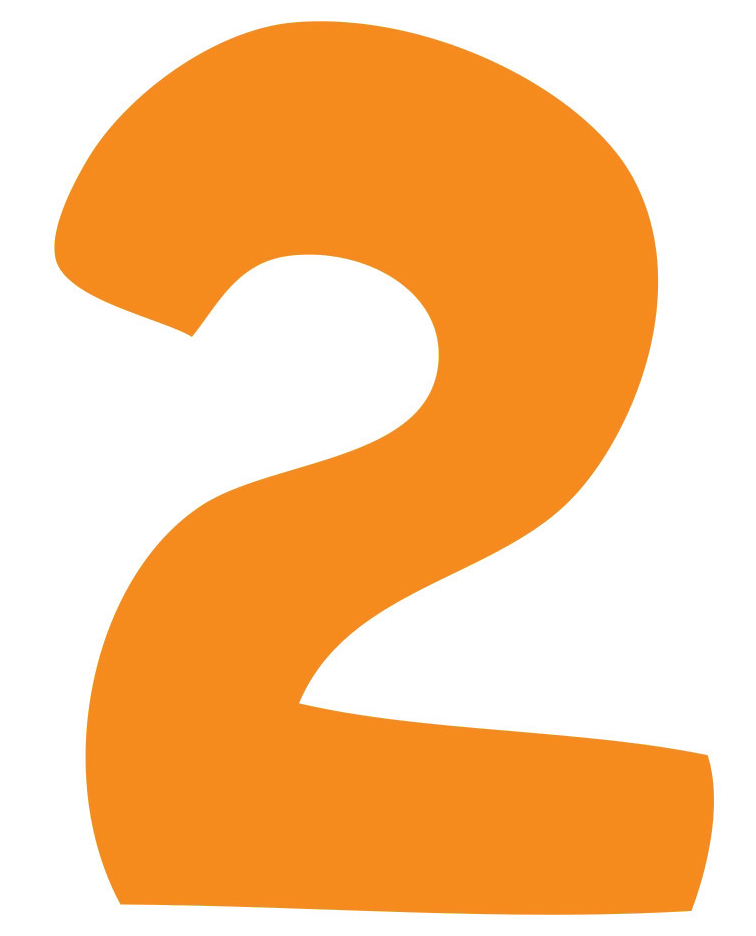
Place the small pieces of leaves in the glass jar,




And, with an adult, add few mililiters of household alcohol to immerge the pieces of leaves. Close the lid tightly. Repeat the experiment for the different tree species.
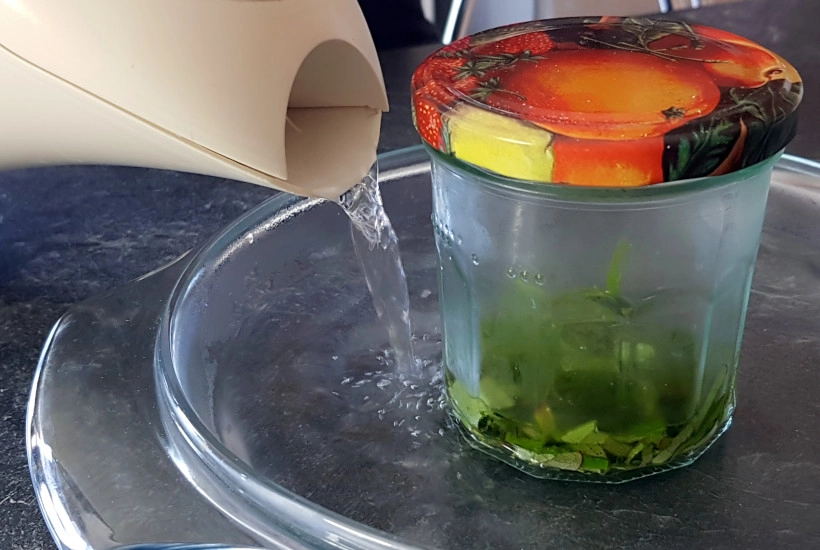
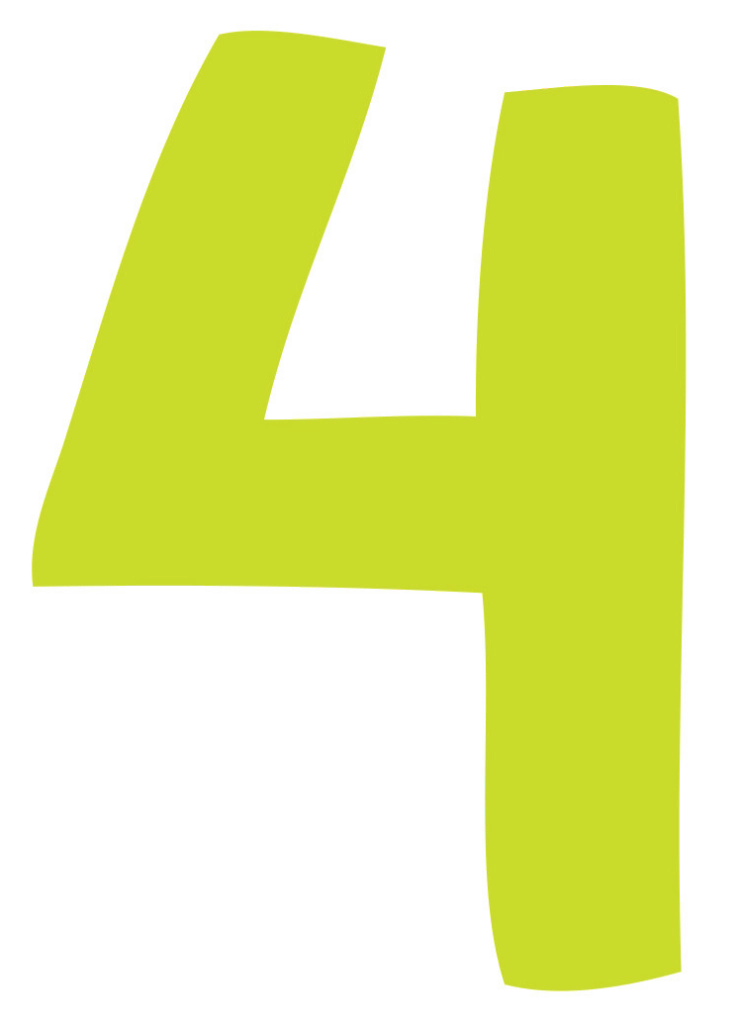
Then place your glass jars in the Pyrex dish and add hot water (1 cm high). You can see that the liquid turns the colour of the leaves.


You notice that the liquid turns the colour of the leaves.

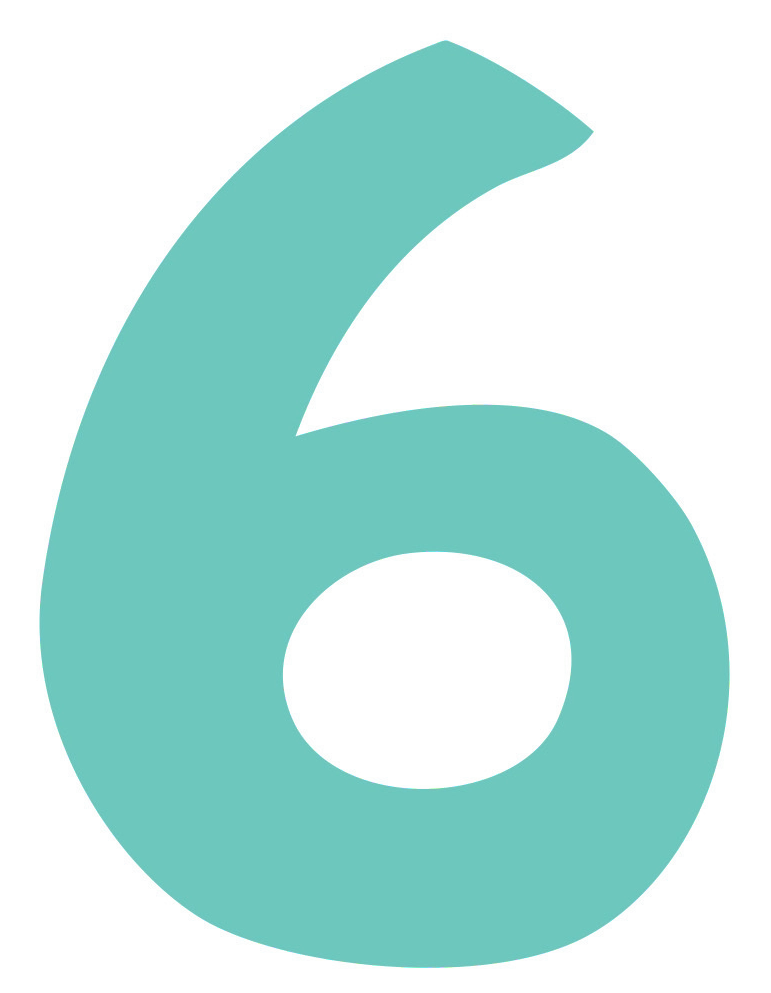
Let it rest for an hour. Then filter your solutions through the cheesecloth.

Collect each liquid in a clean jam jar.
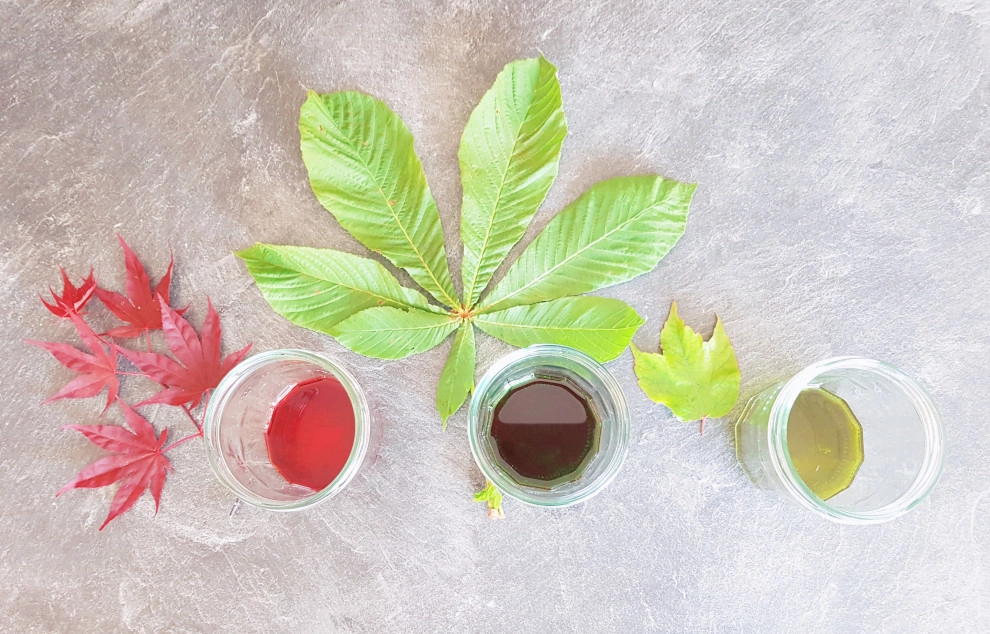

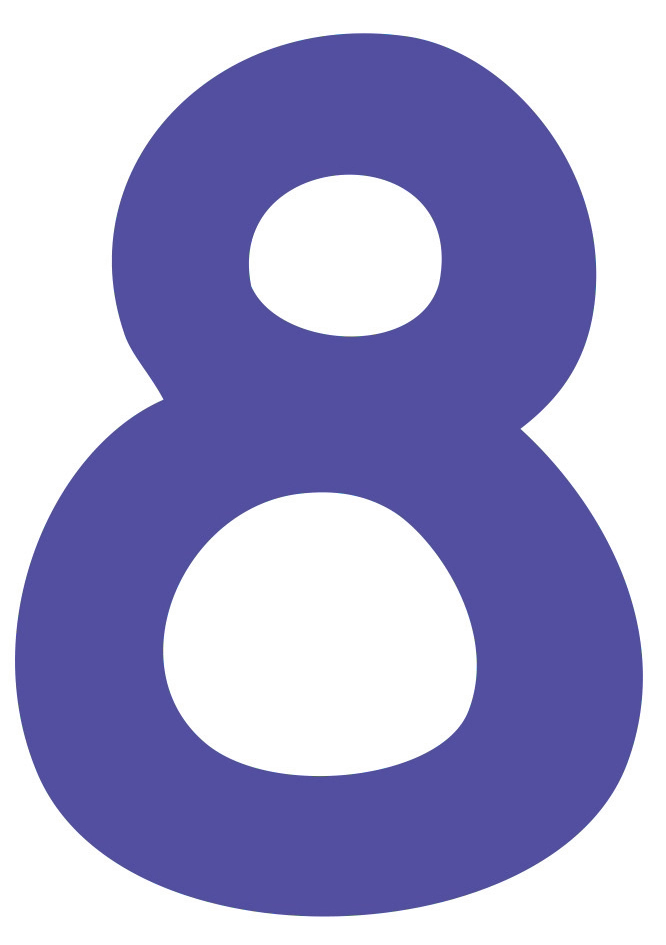
In a coffee filter, cut strips 3 cm wide and 10 cm high. Attach one end to a pencil with adhesive tape and roll the paper up until it is as high as the jam jar.
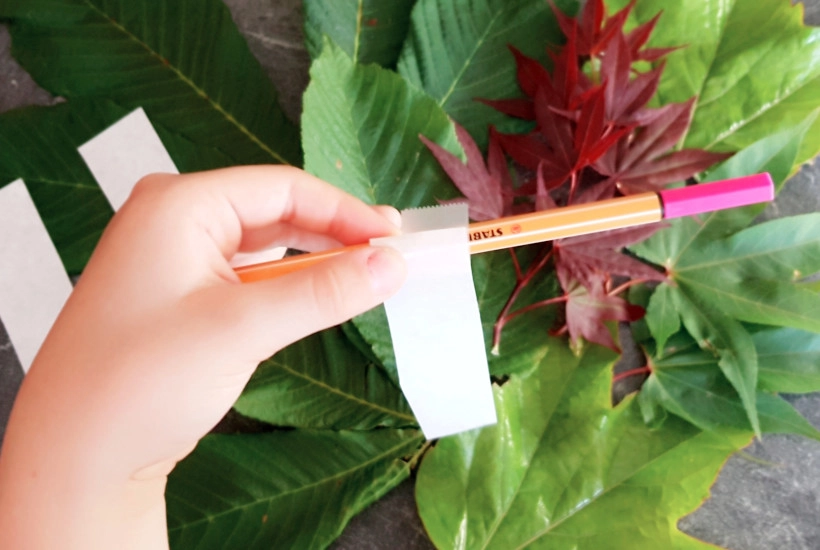
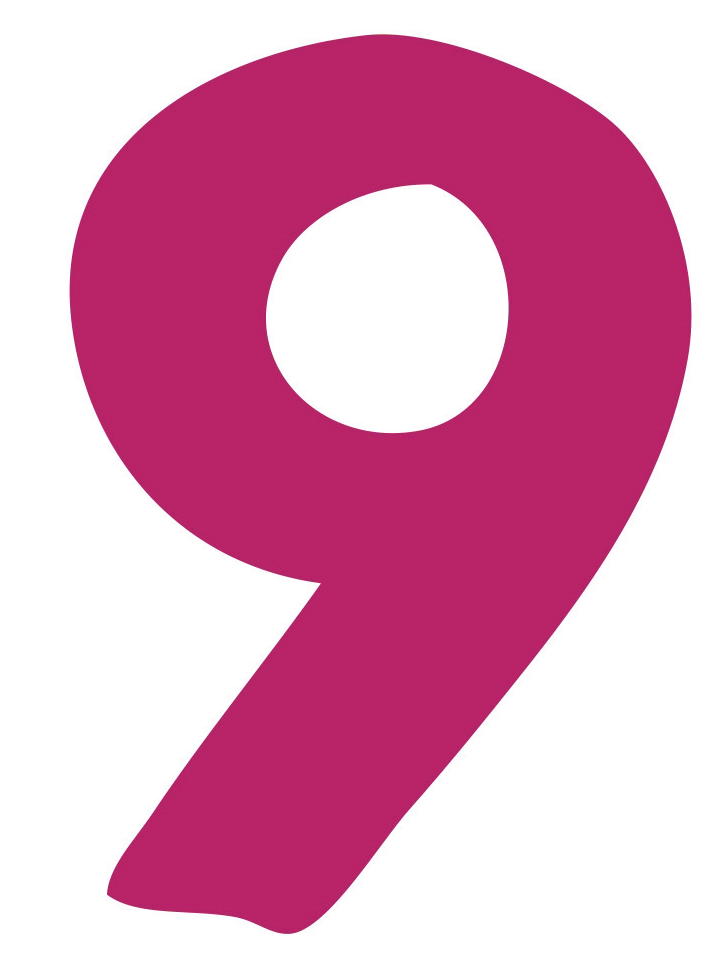
Gently soak the other end of the paper and place the pencil on the edge of the jar.
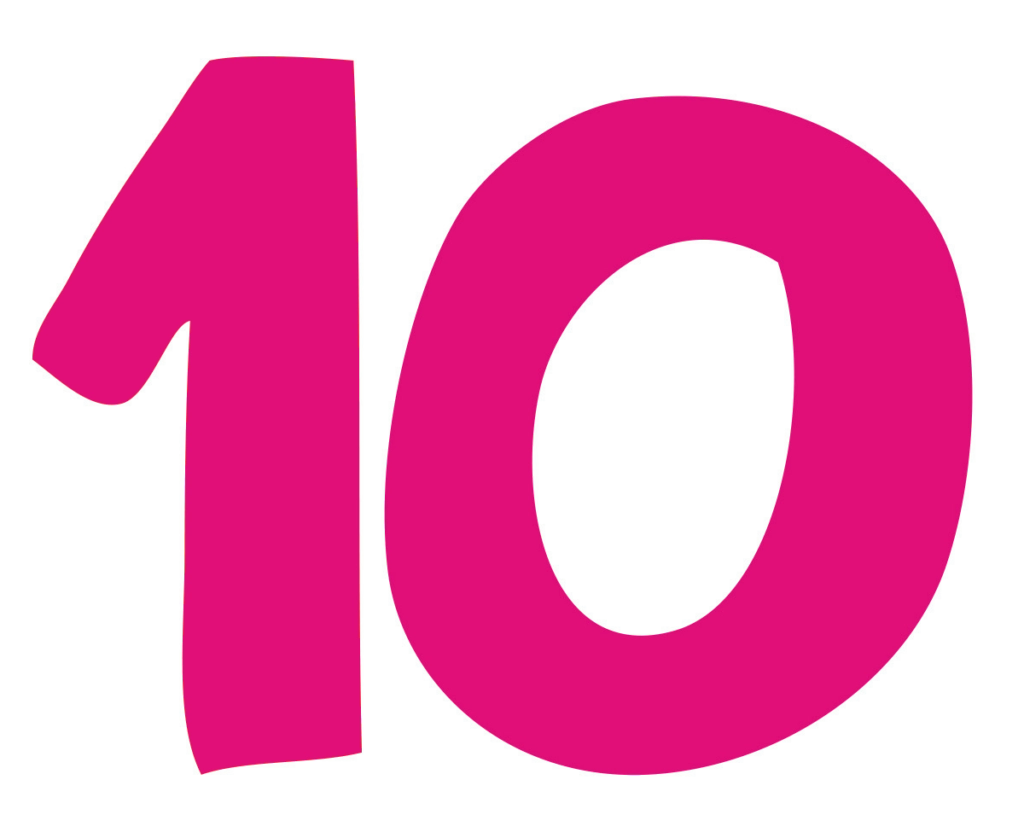
Wait an hour and see what happens. The liquid goes up into the paper. It’s called the capillary effect.
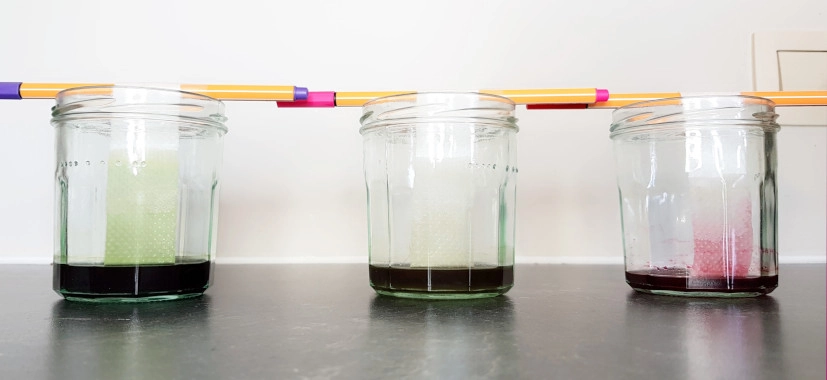


When the time is up, remove the strips and let them dry. Observe the colours that appear.
Understand the experiment

Chromatography, a chemist's trick to separate molecules...
During this experiment, you observe the presence of several colours on the paper strips. You have done a chromatography, that is to say that you have a liquid (the solvent) that has “gone up” in the paper, bringing with it the different coloured pigments present in the sheets. These pigments will not rise at the same speed, so you see different bands of different colours. You have separated the colours and you have seen colours appear that you could not see before.

Why do the leaves change colour in the fall?
To live, plants and trees exploit the phenomenon of photosynthesis. In other words, the process of absorbing the light energy emitted by the Sun and converting it, in the presence of carbon dioxide, into essential food for trees. The pigment that allows photosynthesis to take place is the well-known chlorophyll, which is green in colour.
During spring and summer, chlorophyll is present in large quantities in the leaves, so that it masks the other colours initially present.
In the fall, when the days are shorter and temperatures drop, the tree stops producing chlorophyll. As it decomposes, it reveals foliage of all colours: yellow, orange, brown and red. All these colours are initially present, but we could observe them before autumn.
Did you know?
It was a Belgian who developed chromatography. His name is Joseph Plateau.
Challenge
Test several tree species and identify the ones that give you the most different colours.

Transform milk into plastic
Did you know that plastic can also be produced from natural resources? The best example is milk! Milk proteins, huge molecules like those in plastics, can, under certain conditions, agglomerate to form a solid. […]

The illusion of the silver egg
A breathtaking illusion in which you will change the shell of an egg into silver. Long live physics. […]

Prepare an orange caviar
Use molecular chemistry to create foods with unexpected shapes. Do you think making orange juice beads is impossible? This is without counting on the properties of Agar, a natural molecule capable of gelling all liquids. Transform yourself into a molecular chemist to surprise your friends with your edible creations. […]


